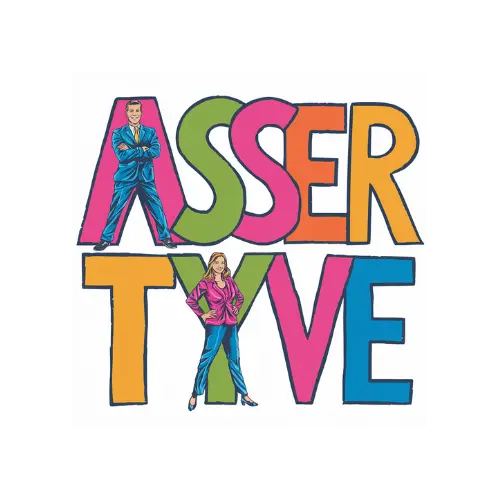The Importance of Assertive Communication in the Workplace
Assertive communication plays a crucial role in fostering healthy workplace dynamics. By clearly expressing one’s thoughts, feelings, and needs in a respectful manner, individuals can establish boundaries, build trust, and enhance collaboration with colleagues. This communication style also helps in reducing misunderstandings, conflicts, and workplace stress, ultimately leading to a more productive and harmonious work environment.
In addition, mastering assertive communication empowers individuals to advocate for themselves and others, negotiate effectively, and provide constructive feedback. It cultivates a culture of open communication, where ideas are freely shared, concerns are addressed promptly, and feedback is viewed as an opportunity for growth. Overall, assertive communication is a cornerstone for professional success and personal development in any work setting.
Understanding the Difference Between Assertive, Aggressive, and Passive Communication
When it comes to communication styles in the workplace, it is essential to distinguish between being assertive, aggressive, and passive. Assertive communication involves expressing your thoughts, feelings, and needs in a clear and respectful manner, while also considering the rights and opinions of others. This style is characterized by honesty, directness, and open communication without violating the boundaries of others.
On the other hand, aggressive communication involves expressing your thoughts and feelings in a forceful and sometimes hostile manner, disregarding the feelings and rights of others. This style often involves dominating conversations, being confrontational, and using intimidation tactics to get one’s point across. Passive communication, in contrast, involves avoiding confrontation, suppressing feelings, and yielding to the needs and demands of others without standing up for oneself. This style often leads to feelings of resentment and frustration, as one’s own needs are consistently overlooked.
Key Components of Assertive Communication
Assertive communication involves expressing one’s thoughts, feelings, and needs in a clear and direct manner while respecting the rights and opinions of others. One key component of assertive communication is the use of “I” statements to take ownership of one’s own feelings and experiences, rather than placing blame or making presumptions about others. By using phrases like “I feel” or “I need,” individuals can convey their emotions and requirements without coming across as aggressive or confrontational.
Another essential component of assertive communication is active listening. This involves giving full attention to the speaker, maintaining eye contact, and engaging in empathetic responses to demonstrate understanding. Active listening allows for effective communication by ensuring that all parties feel heard and validated, fostering mutual respect and open dialogue in the workplace.
Benefits of Mastering Assertive Communication at Work
Mastering assertive communication in the workplace comes with a plethora of benefits. Firstly, it fosters a positive work environment by promoting transparency and honesty. When individuals feel empowered to express their thoughts and feelings assertively, misunderstandings and conflicts are reduced. This open communication leads to better collaboration and teamwork among colleagues, ultimately improving overall productivity and morale within the organization.
Additionally, mastering assertive communication enhances one’s self-esteem and confidence. By effectively conveying your needs, opinions, and boundaries in a respectful manner, you establish a sense of control over your work environment. This self-assurance not only garners respect from others but also allows you to tackle challenges more effectively and make informed decisions. Ultimately, mastering assertive communication equips you with the tools to navigate various work scenarios with grace and professionalism.
Tips for Developing Assertiveness Skills
When working on developing assertiveness skills, it is essential to practice active listening. This means giving full attention to the speaker, maintaining eye contact, and engaging in the conversation without interrupting. By actively listening, you show respect for others’ opinions and create a more open and collaborative communication environment.
Another important tip for developing assertiveness skills is to practice setting clear boundaries. This involves clearly communicating your needs, desires, and limits to others in a respectful manner. Setting boundaries helps prevent misunderstandings and ensures that your voice is heard in various professional situations.
Common Challenges in Implementing Assertive Communication
One common challenge in implementing assertive communication is the fear of confrontation. Many individuals may feel uncomfortable expressing their needs and boundaries out of concern for conflict or negative reactions from others. This fear can lead to a tendency to avoid assertive communication altogether, opting instead for passive or aggressive approaches that may not effectively address workplace issues.
Another challenge is a lack of self-awareness about communication styles. Some individuals may have difficulty recognizing the differences between assertive, aggressive, and passive communication behaviors. Without this awareness, they may struggle to adapt their communication style to be more assertive in various workplace situations, hindering their ability to effectively assert themselves and communicate their needs with clarity and confidence.
Strategies for Handling Difficult Conversations Assertively
Difficult conversations are an inevitable aspect of workplace interactions. When faced with a challenging discussion, it is crucial to approach it assertively. One effective strategy is to focus on the issue at hand rather than resorting to personal attacks. By maintaining a calm demeanor and using “I” statements to express thoughts and feelings, it fosters a more constructive dialogue.
Another useful technique for handling difficult conversations assertively is active listening. This involves fully engaging with the speaker’s perspective, asking clarifying questions, and demonstrating empathy. By showing genuine interest in understanding the other person’s viewpoint, it helps to de-escalate tensions and promotes a more collaborative problem-solving approach.
Building Confidence in Assertive Communication
When it comes to building confidence in assertive communication, practice is key. Start by expressing your thoughts and needs in a clear and direct manner. Remember to use “I” statements to convey your perspective without sounding accusatory. It may feel daunting at first, but the more you practice asserting yourself respectfully, the more natural and confident you will become in your communication style.\n
Another way to build confidence in assertive communication is to set boundaries and stick to them. Clearly define your limits and communicate them assertively when needed. By respecting your own boundaries, others will also learn to respect them, leading to a more positive and assertive dynamic in your workplace interactions.
Practical Techniques for Improving Assertive Communication
One practical technique for improving assertive communication is to practice active listening. This means giving your full attention to the speaker, making eye contact, nodding to show understanding, and asking clarifying questions to ensure you have grasped their message accurately. Active listening not only fosters better understanding but also shows respect for the other person’s perspective.
Another technique is to use “I” statements when expressing your thoughts and feelings. Instead of blaming or accusing others, focus on owning your emotions and communicating them assertively. For example, saying “I feel overwhelmed when I have too many projects on my plate” is more constructive than saying “You always give me too much work.” This approach can help to avoid defensiveness and promote a more open and productive dialogue.
• Practice active listening by giving full attention to the speaker
• Make eye contact, nod, and ask clarifying questions
• Show respect for the other person’s perspective
• Use “I” statements when expressing thoughts and feelings
• Own emotions and communicate assertively
• Avoid blaming or accusing others
Maintaining Professional Relationships Through Assertive Communication.
Assertive communication plays a crucial role in maintaining professional relationships in the workplace. By clearly and confidently expressing thoughts, feelings, and boundaries, individuals can foster mutual respect and understanding with their colleagues. This not only helps in avoiding misunderstandings but also creates a positive work environment that promotes collaboration and productivity.
Moreover, using assertive communication allows individuals to address issues or conflicts in a direct and respectful manner, without causing unnecessary tension or resentment. By asserting their needs and opinions while also considering the perspectives of others, employees can navigate challenging situations with professionalism and build stronger connections with their peers and superiors. Ultimately, mastering assertive communication skills can contribute to creating a harmonious and effective work culture where open communication and constructive dialogue are valued.
How can assertive communication benefit professional relationships in the workplace?
Assertive communication can help build trust, improve collaboration, and resolve conflicts in a constructive manner, leading to stronger professional relationships.
What are some common challenges in implementing assertive communication?
Some common challenges include fear of conflict, lack of confidence, cultural differences, and ingrained communication habits.
What are some practical techniques for improving assertive communication?
Some techniques include using “I” statements, active listening, setting boundaries, and practicing assertiveness in small interactions.
How can I build confidence in my assertive communication skills?
Building confidence in assertive communication involves practicing self-awareness, setting realistic goals, seeking feedback, and gradually pushing yourself out of your comfort zone.
How can I handle difficult conversations assertively?
Strategies for handling difficult conversations assertively include preparing beforehand, staying calm and composed, focusing on the issue at hand, and actively listening to the other person’s perspective.







Leave a Reply